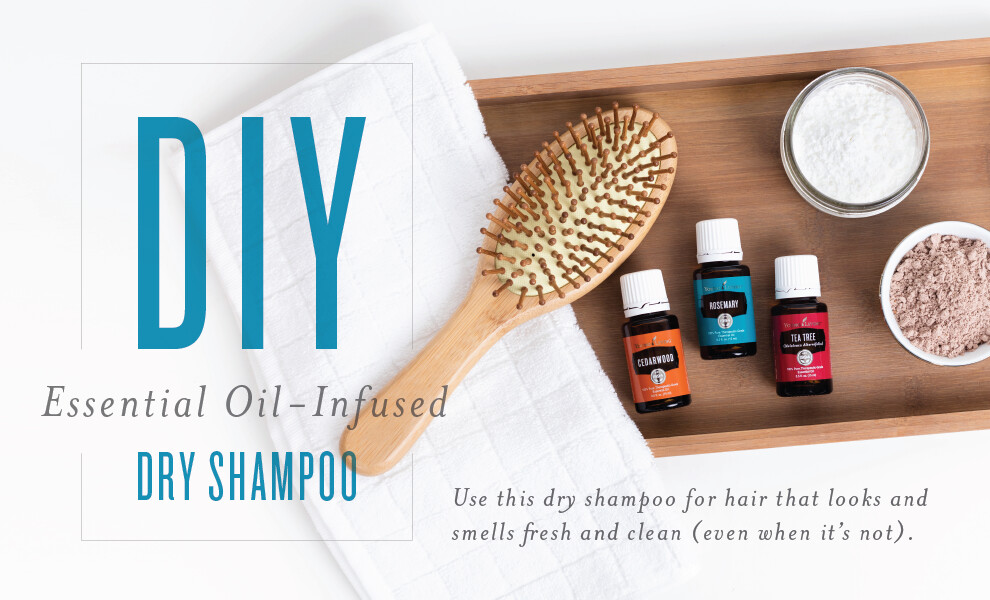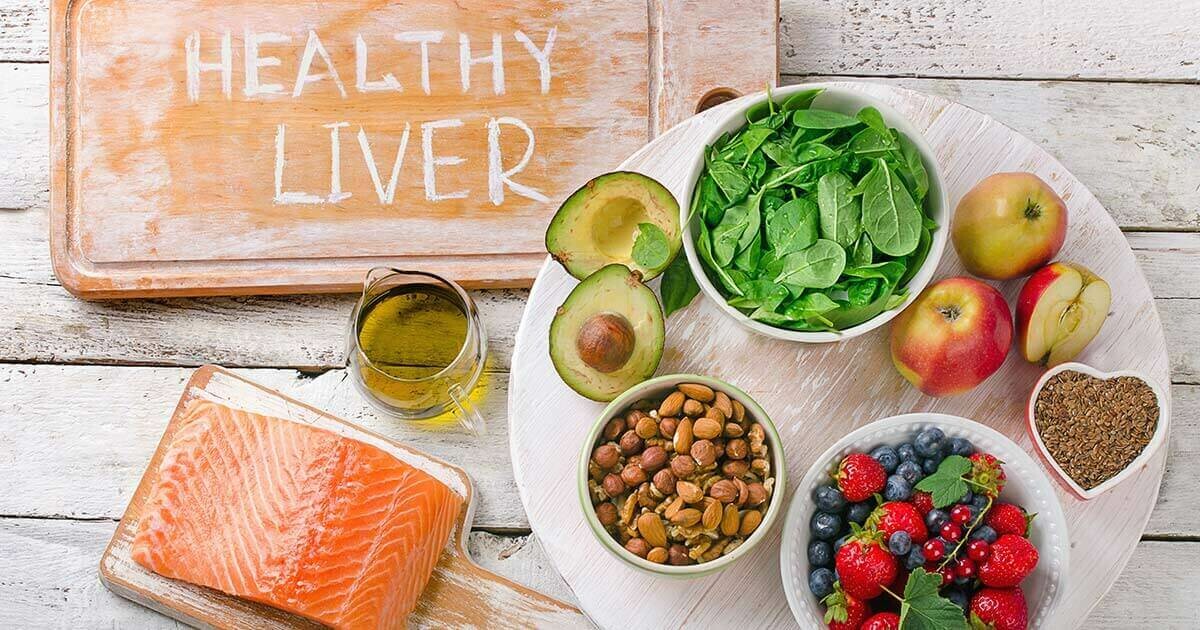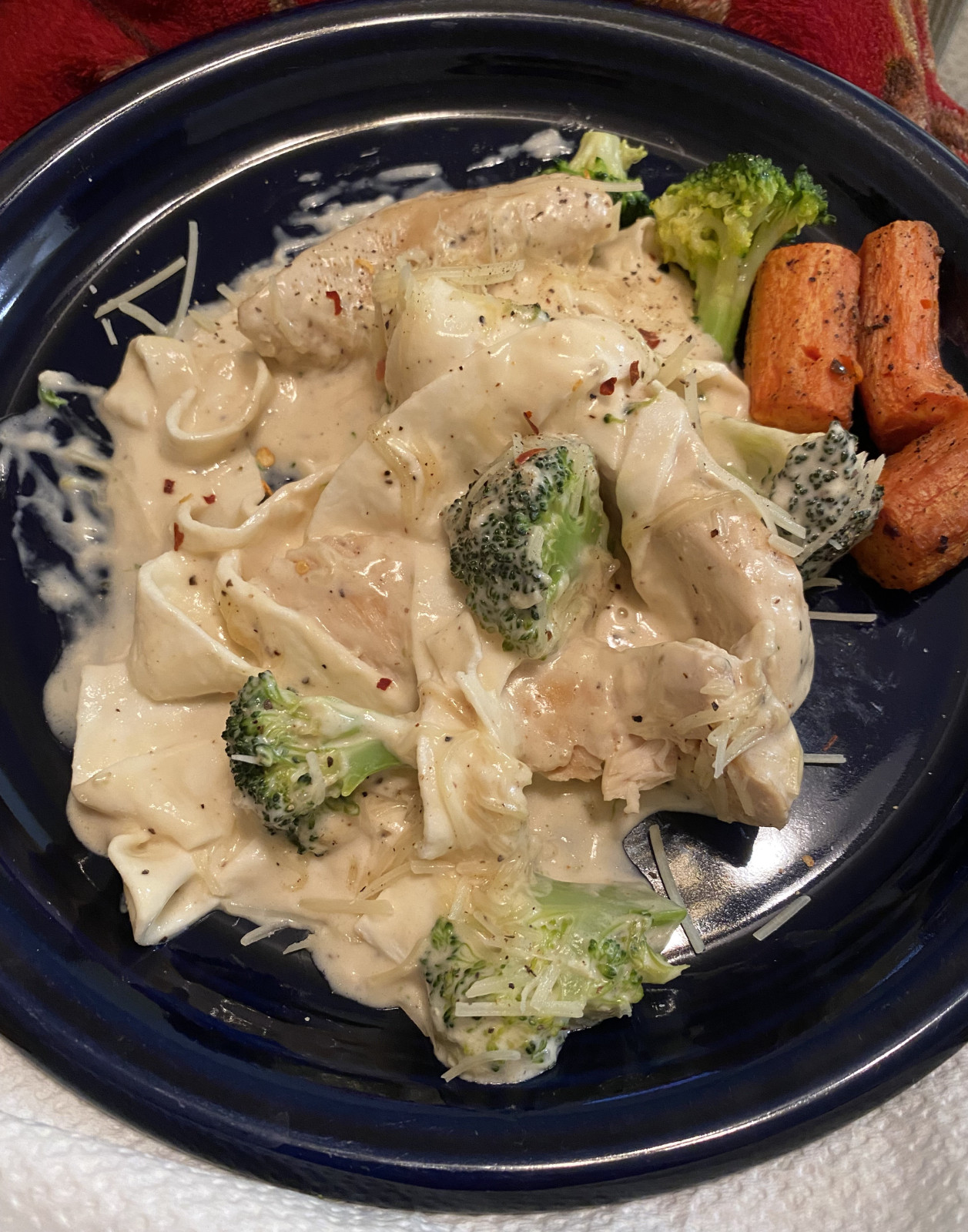
I've been eating low carb so long that I'm pretty used to just skipping out on noodle dishes. However, sometimes there's a dish that I kind of crave, and Alfredo fits the low carb profile except for the noodles involved.
BUT - I've been in 2 Carnivore Diet groups to learn new dishes and I kept seeing talk of "noodles". If you aren't familiar, Carnivore Diet means only animal products, so if it's Carnivore approved that means it's also going to be low to no carbs. There were a few recipes to make your own, but this version caught my eye for the simplicity: buy Egg Life Wraps and turn them into "noodles". WHAT? Yup!
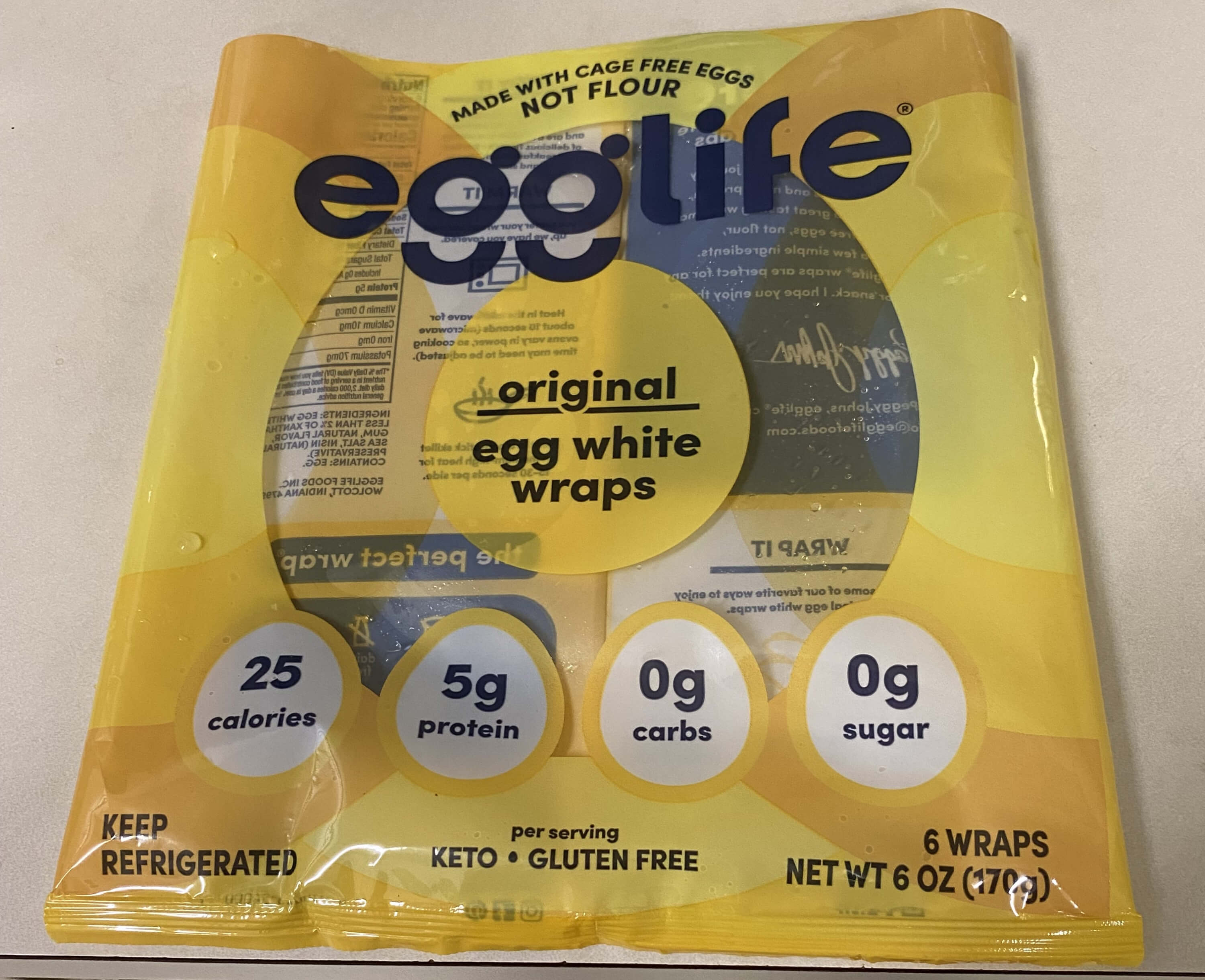
If you've not seen them, they are generally in the refrigerated section of the grocery store by the eggs, egg white cartons, etc. I have never used them as wraps, but last night I turned them into "noodles" and I think it's actually life-changing, LOL!!
You can honestly make the Alfredo any way you want to with your favorite recipe. The main thing was learning how to best make the "noodles". But, here's basically what I did for the entire recipe.
Season chicken breasts (I cut mine into strips) with Redmon's Real Salt, garlic powder, black pepper and a little dry Italian seasoning. Brown in batches in a large skillet. Separately, I steamed some fresh broccoli in a steamer basket and put that aside when it was done.
After all the chicken was browned and in a dish staying warm, I poured 2 jars of Alfredo sauce into the same pan with the chicken drippings (don't waste flavor!!). I added some red chili flakes and brought it up to a simmer.
While all of that was cooking, I brought a small sauce pan of water to boiling. Place the egg wraps on a cutting board, and using a pizza cutter, cut the wraps into strips. Drop them in batches into the boiling water and cook for exactly 1 minute for each batch, stirring to make sure they all get submerged and don't stick together.
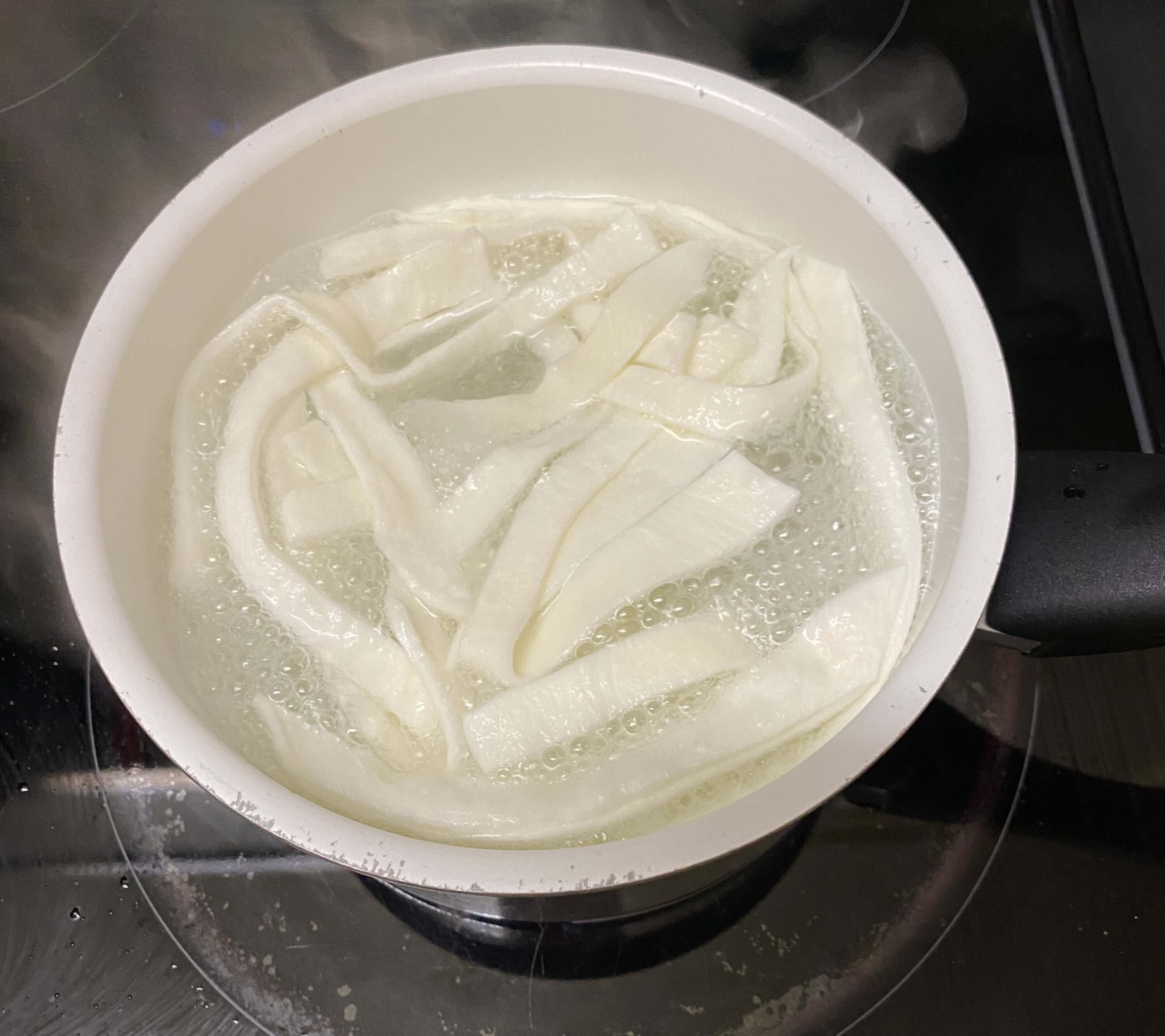
Bring the cooked chicken, broccoli and the boiled noodles all back together in the sauce and let it simmer for just a few minutes so everything gets coated and comes together in the sauce.

I served ours with grated parmesan cheese and extra red pepper flakes.
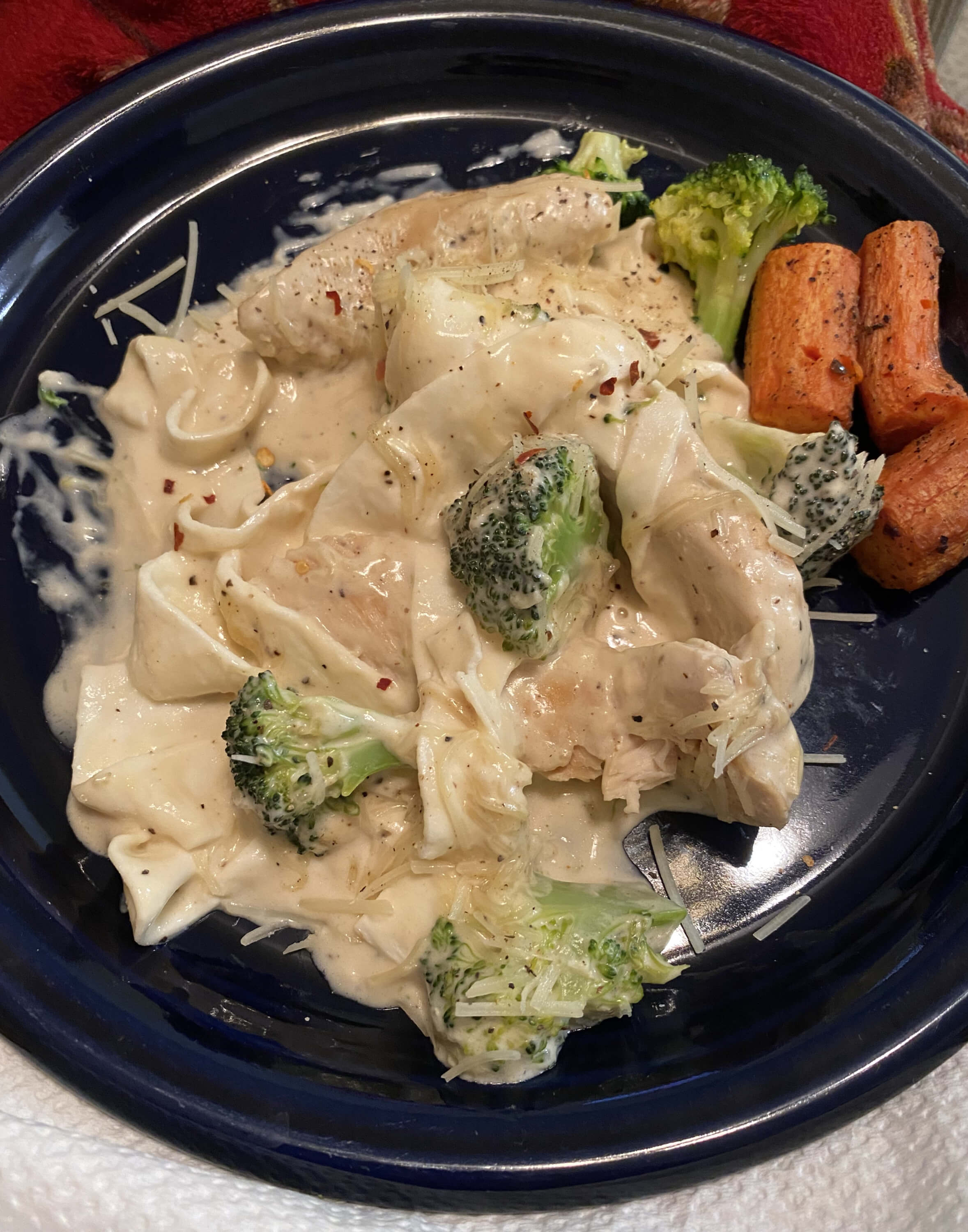
I hope you'll try these "noodles" out even if it's not this specific recipe! I am planning on trying them next with Beef Stroganoff, and I'm honestly excited about that! LOL It's definitely time for some comfort foods since it's gotten cold here in Texas.
If you do try this, let me know what you thought and if you use the "noodles" for any other dishes! Enjoy!
Blessings,
Blessings,
Sarah Claburn, ND
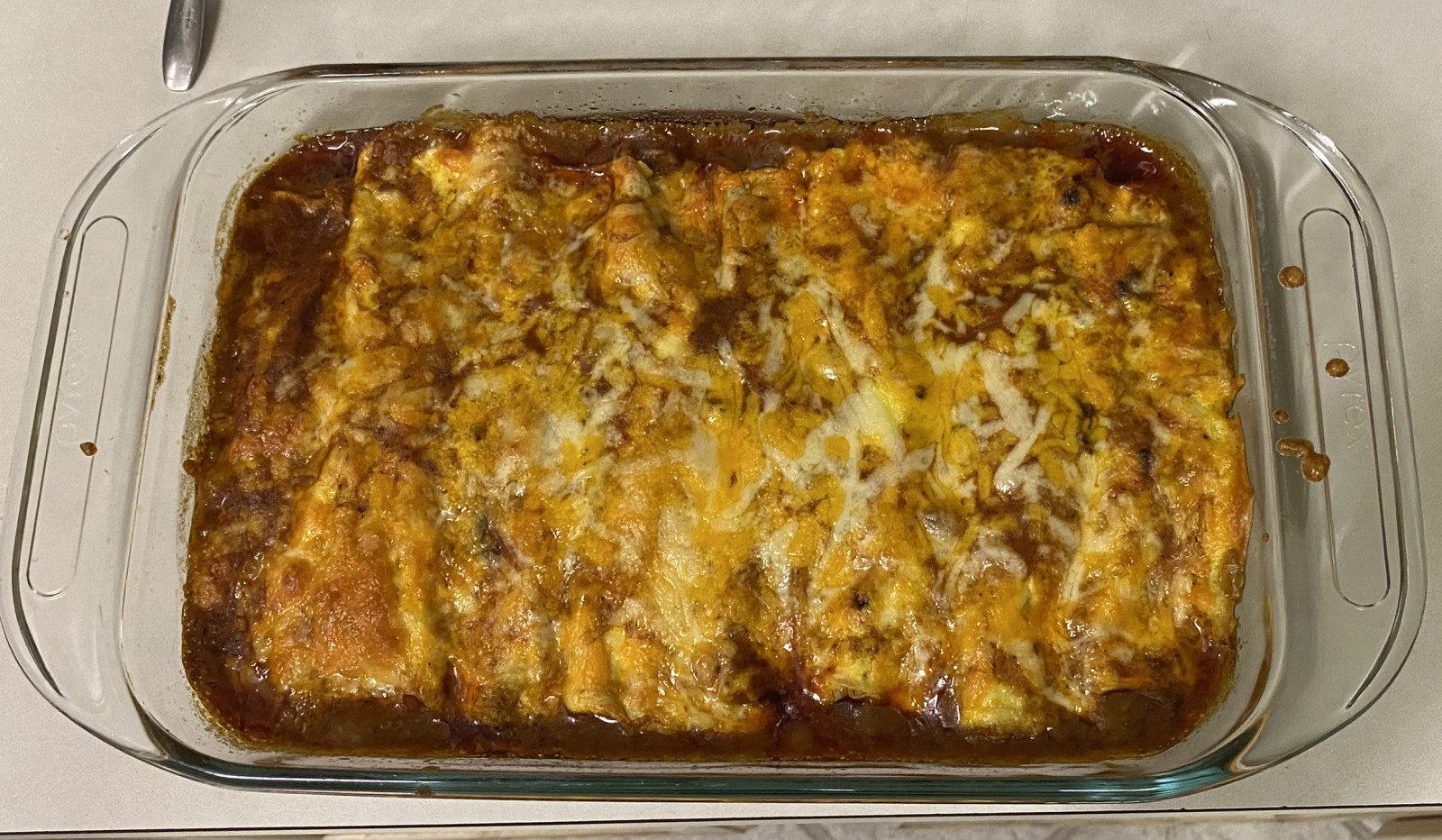
You have probably heard of a lot of diet plans like low carb and keto. One of the "newer" labeled plans (which is not new at all) is Carnivore. And yes, it's exactly what you think it is: only meat and animal-based foods. I'm not going to go into it deeply here, but yes. There is plenty of evidence that a human is built to live on animal foods alone. I've recently spoken to someone who has been eating Carnivore for 4 years. His labs are great, and he looks like he works out 8 hours a day at the gym. Clearly it works for him. If you want to look more into it you can follow Dr. Shaun Baker, Dr. Andew Chaffee and Dr. Ken Berry to name a few.
Now, let's get back to the enchiladas! I know what foods work best for my body: lower carbs, no starches or grains or sugars. So the last 2 months or so we have gotten back to eating better. But I still love Tex Mex and comfort foods. I knew there were recipes for egg "tortillas", so I made up my own low carb recipe using my very favorite enchilada gravy from The Homesick Texan.
Here is the recipe to the best of my ability, lol. You may want to experiment with the tortillas.
For the egg tortillas:
2 eggs
2 tbsp water
dash of salt
Blend all the ingredients really well. Heat a small non-stick pan on about medium heat with a pat of butter or small amount of avocado oil. Pour just enough egg mixture to coat the bottom of the pan in a thin layer, rolling it around so it's as even as possible. Cook 2-3 minutes then flip and cook another 2-3 minutes. Remove and place on a wire rack and repeat over and over again. You'll need multiple batches of the egg mixture, but it will depend on the size of your pan and how thick you make the tortillas.
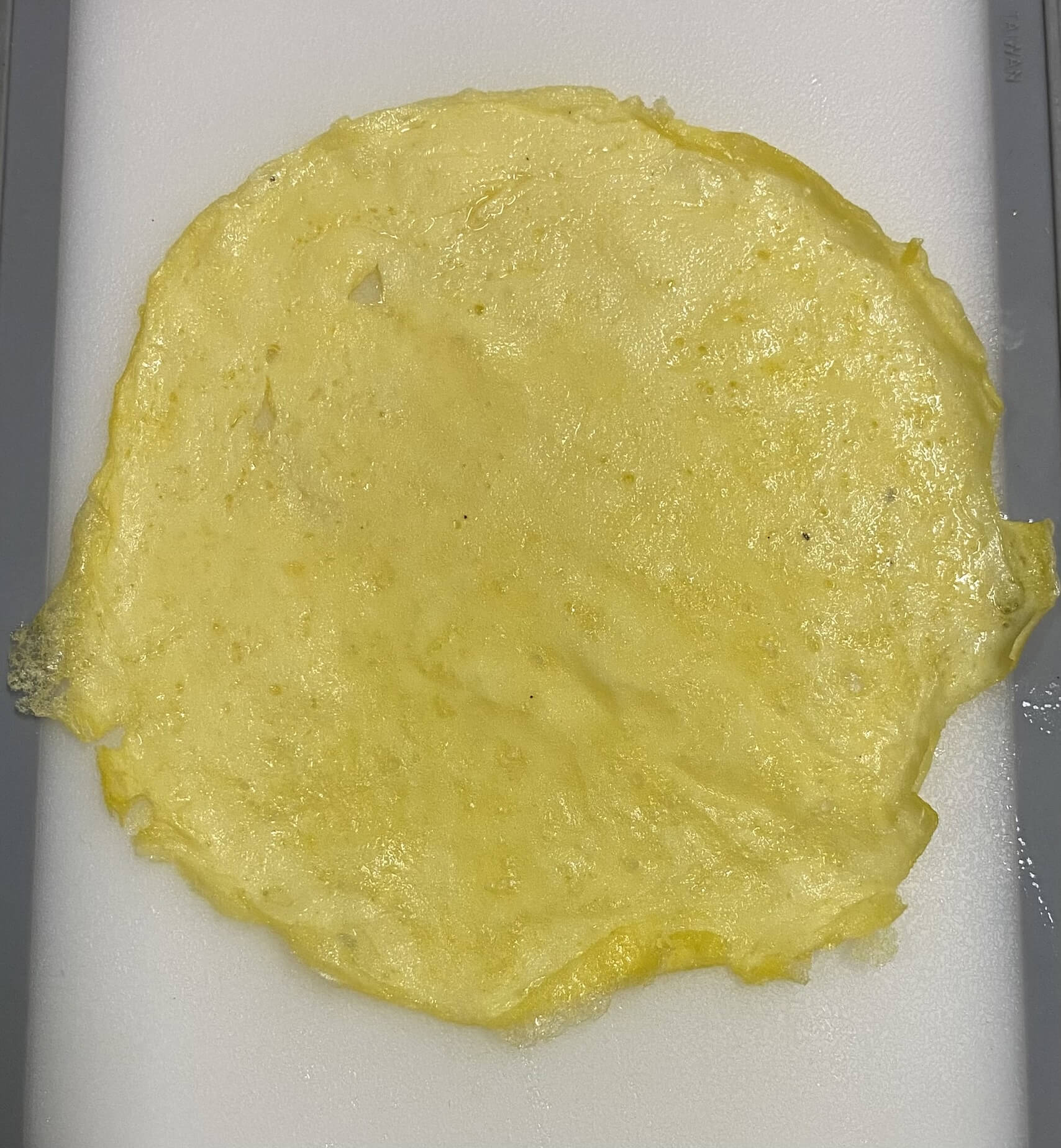
Once you have enough tortillas, you can move on to the delicious gravy. As I mentioned above, I use the recipe from The Homesick Texan - with my gluten free modifications. Also, I double the recipe because it's THAT good!
1/2 cup lard or avocado oil
1/2 cup gluten free (or regular) flour
4 tbsp chili powder
2 tsp ground cumin
2 tsp garlic powder
1 tsp dried oregano
1 tsp kosher salt
1 tsp black pepper
4 cups beef broth (you may end up needing more)
Heat the lard or oil in a pot or high-rimmed skillet over medium high heat. Whisk in the flour and stir until it's lightly browned, about 1 minute. Whisk in the spices until well combined. Pour in the broth while still whisking, and continue until it's thickened, about 3-5 minutes. Sometimes I want a little thinner sauce and end up adding in more broth. Taste and adjust the seasonings to your liking. Turn it off and set to the side, or you can let it continue to simmer while you prep everything else.

Heat your oven to 350 degrees. The baking dish you use will totally be dependent on how many enchiladas you are making. I used a 7x11 2-quart Pyrex baking dish. Pour about 1/2 - 1 cup of the enchilada gravy into the bottom of the baking dish to coat.
For the enchiladas, use the filling of your choice: seasoned ground beef, shredded chicken, cheese or even a veggie filling. I generally do seasoned beef, and my daughter loves cheese and spinach.
Take one of your egg tortillas and place a few tablespoons of your filling and a small amount of shredded cheese. Roll and place seam side down in the baking dish. Continue with the remaining tortillas. Pour over the chili gravy until covered (you probably won't use all of it unless you are making a ton of enchiladas), then top with more grated cheese. Bake uncovered for about 20 minutes or until the sauce is bubbly and cheese has melted.
Serve with toppings of your choice like sour cream, jalapenos, salsa or diced onions. Enjoy!
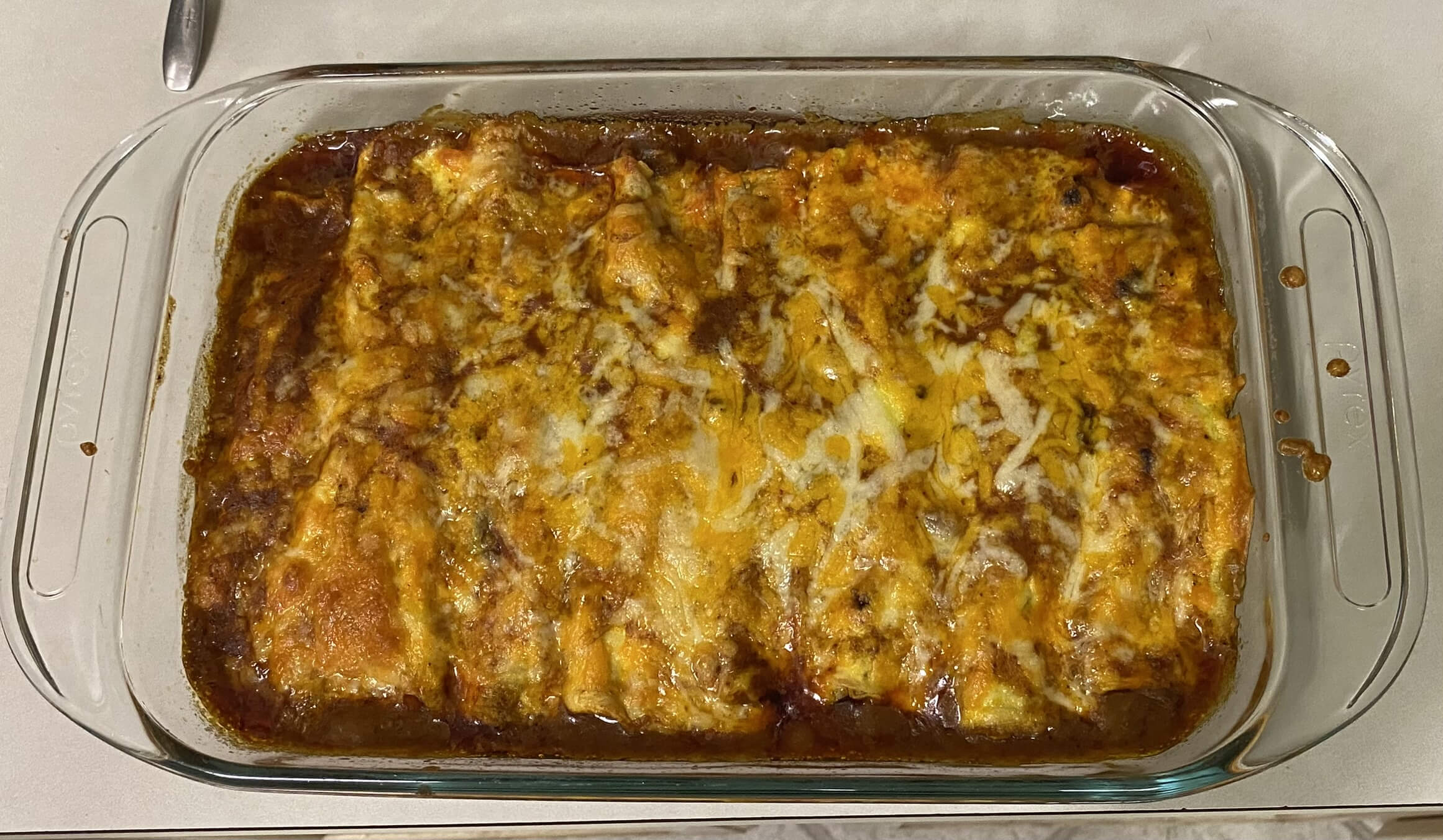
Note: I always have "extra" gravy and serve it on the side. Nobody is ever mad about having some extra gravy on the side! LOL
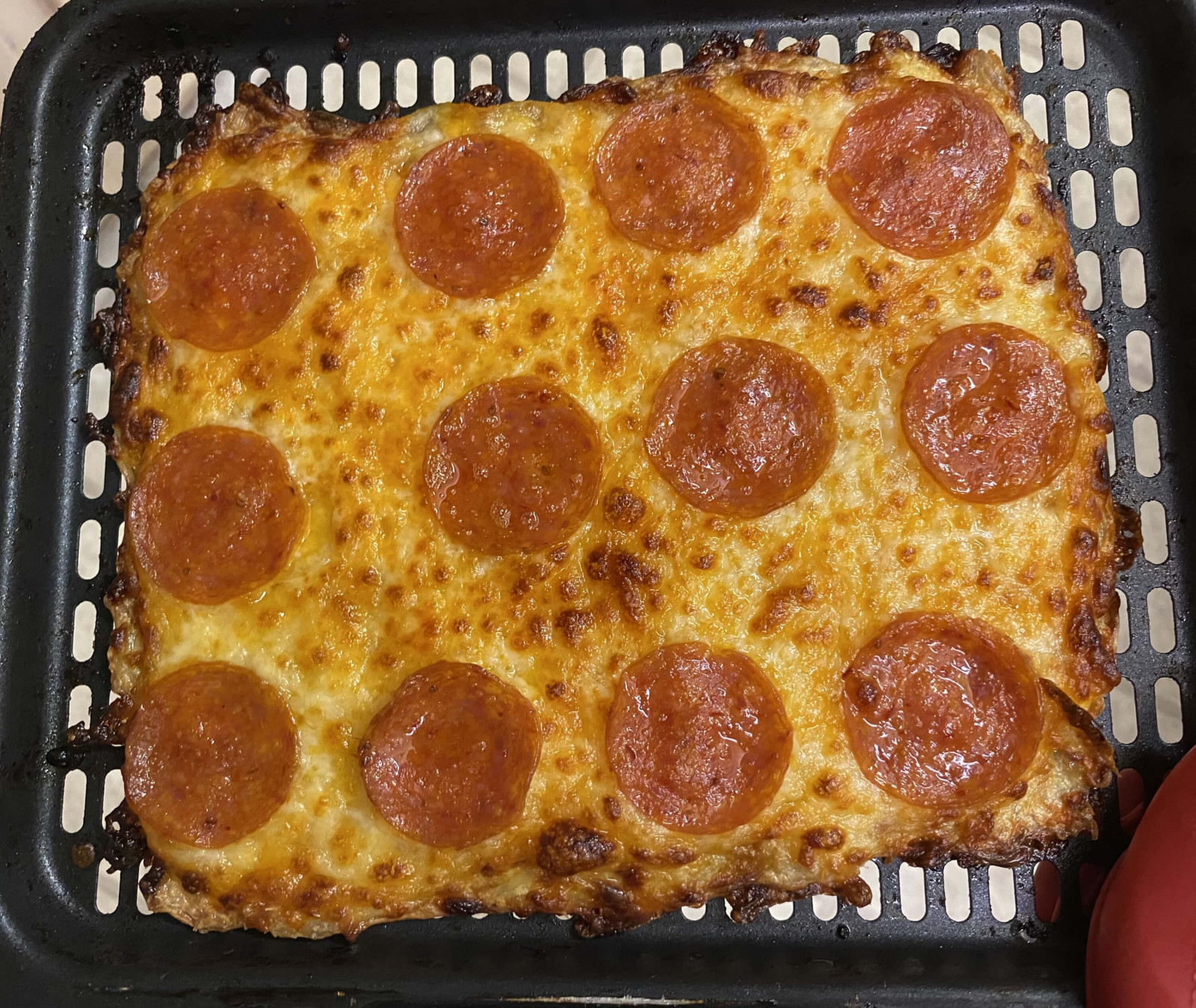
Being gluten free, I've tried a lot of different pizza crusts. I do try to avoid grains in general even if they don't contain gluten, because my body just does better. I've done the cauliflower crust, and it was indeed delicious - but I personally think cauliflower is one of THE MESSIEST ingredients to work with - right up next to shredding cabbage, lol!
Although I am not following the Carnivore diet, I do follow some groups for recipes because it does fit my way of eating. And this one definitely caught my eye!
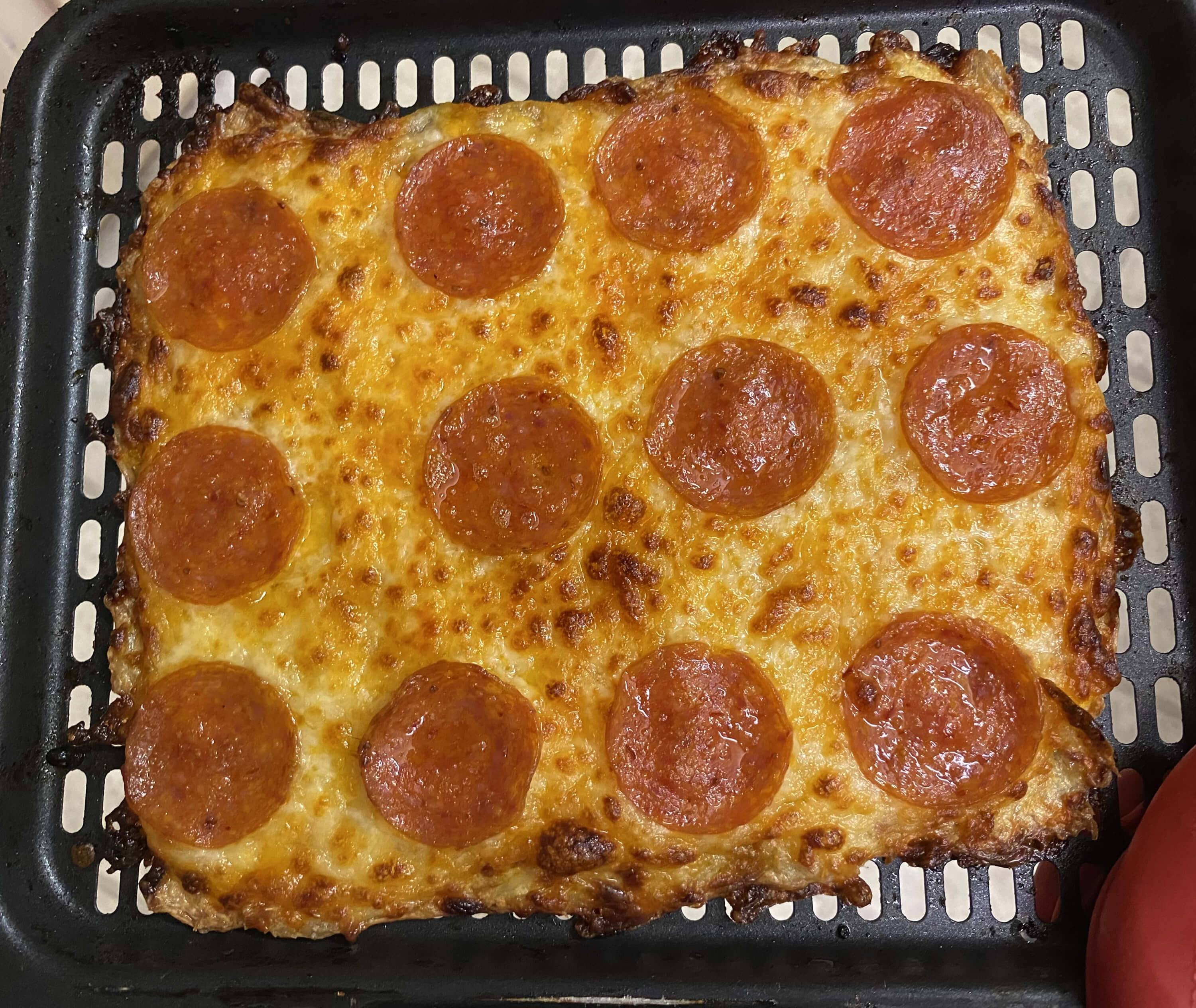
For ease of recipe...this gets 2 thumbs up and a snap! I used the ingredients I had on hand and can't wait to pile on different toppings in the future. Go crazy, be creative and let it fit however you eat.
For the basic crust recipe you'll need:
1 can chicken (or use leftover roasted/baked)
1 egg
1/4-1/2 cups shredded cheese of your choice
Mix all of the ingredients together really well, breaking the chicken down as much as possible (I used a fork). Spread on a piece of parchment paper on a cookie sheet and bake at 400 for 10-15 minutes, watching it for desired crispiness.
Take it out of the oven and cover with whatever toppings you like. For this I used a little cheddar jack, mozzarella and pepperoni. Bake in the oven for another 10-15 minutes, again, watching it for desired crispiness and browning.
Notes: As mentioned, you can use whatever toppings, sauce and seasonings you like. Once you have the crust down you are set! I found that it's best right out of the oven, as it seems to "set" as it cools. Also, I will be experimenting with cooking it in my air fryer oven to maximize the crispy crust. But for my first attempt, I'm definitely happy!
Blessings to you and your family and let me know if you make this and how it turns out!
Sarah C, ND

Did you know that processed foods can deplete nutrients?
I know, convenience foods are, well, convenient!! And it is definitely so hard to avoid them at times. But I recently read an article on this so I wanted to share.
Whole foods are exactly that - designed specifically how God wants them to work optimally in our bodies to nourish us. The companion vitamins and minerals are together with fiber, fats or proteins in one complete source.
So what happens when we fill our bodies with processed foods instead? We replace the natural absorbable compounds with synthetic chemicals and "food-like" ingredients that actually impair the body's ability to digest and absorb nutrients.
Some of the culprits are:
- excessive salt
- sugar
- artificial sweeteners
- emulsifiers
- food dyes
Overall, these processed food additives wreak havoc on your body in a variety of ways. Excessive salt can interfere with the absorption of minerals like calcium, magnesium and zinc while also putting a strain on your kidneys. Sugar can reduce the good bacteria diversity in your gut and can cause inflammation. Artificial sweeteners and emulsifiers also can deplete your good gut bacteria which decreases nutrient absorption.
I have a saying I've used for forever which is, "The closer to God the better the food." It's a simple saying but I think holds true. So do your best: at least 80 percent of the time - do better. Eat a variety of good whole, fresh foods and skip the inner aisles of the grocery store where the box foods are located.
Blessings from our house to yours!
Sarah Claburn, ND
Sarah Claburn, ND
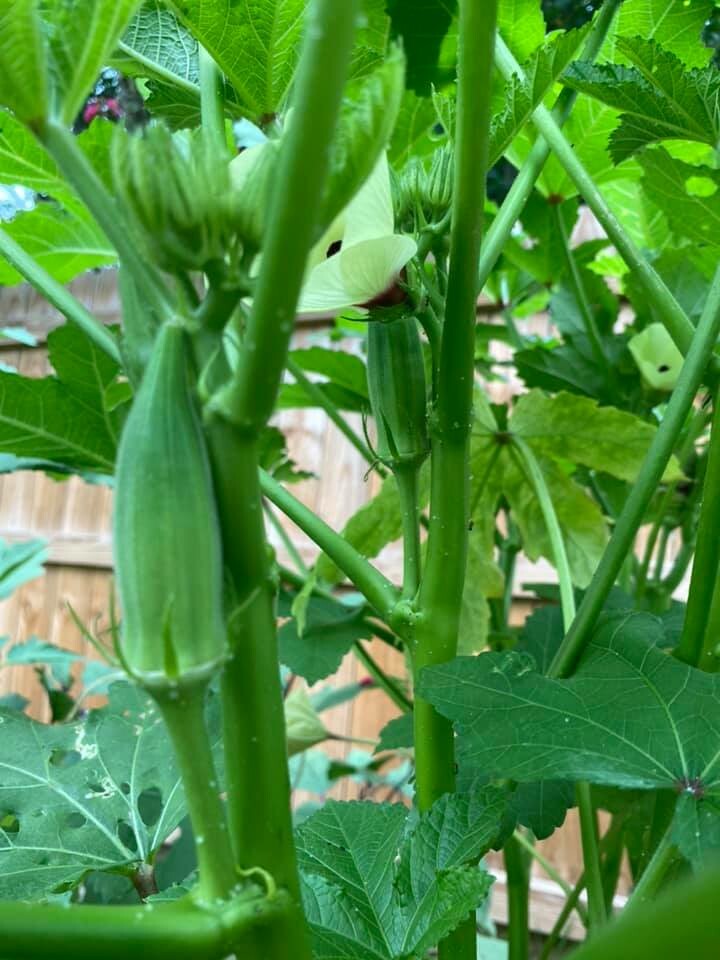
Hello and happy July!
If you don't know, I love love LOVE to garden. Now - let's be clear, I am NOT an expert! lol I do research, and I read information and try to do things the best way. But - I also am totally that person that just thinks, "Well, let's just plant it and see what happens!"
I live in North Texas, and that means I actually have a super long growing season. Realistically, I can have something most all year long, assuming we don't get a super harsh winter - or a historic freeze like we did in February. Since I'm a Southerner, I love to grow okra, tomatoes, black eyed peas and lots of different peppers. I've also learned that Japanese Eggplant grows really well for me, so that last 2 years I've had that in my garden as well.
So I want to just encourage you - if you think you want to garden, just do it! There are tons of websites and resources you can find. Basically you want to know what growing region you are in, and you can look up the best varietals for your region - if you want to get that specific. You can find seeds everywhere - even the dollar stores - and you should be able to find transplants at most home stores like Lowe's or Home Depot. I prefer to start at my local nurseries to help support them, then on to the bigger stores to fill in the blanks.
For seeds, I do prefer to get heirloom or organic, and Sustainable Seed Company is my go-to. I love that they have packs like a "Fall Garden". I even bought one this past year that is a "survival" pack and comes in a resealable envelope that helps keeps the seed viable for quite a few years.
You can grow in containers - don't make it hard! But if you want to do something bigger, we've had great success with raised beds. We've evolved over the years. My husband has made simple wooden beds, but this year a friend told us about some really nice, taller metal beds that were on sale at Tractor Supply. So we got 2 - and they are great! He actually built platforms for them with a sheet of weed cover cloth, and they are the perfect height for me.
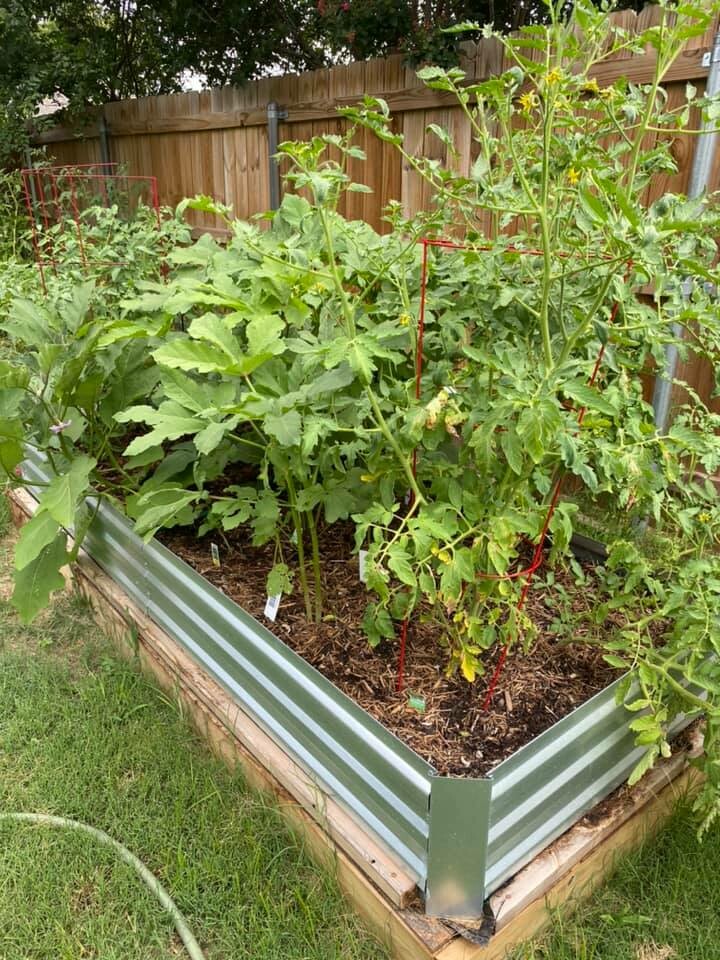
You can see this bed is nice and deep, and it actually has a bar that goes across the middle half for support. This bed has tomatoes, eggplant and okra in it.
One of my favorites to grow is beans and peas - they are so easy!!! Right now I have a half bed of black eyed peas, and as my radishes and beets get pulled, I will probably replace them with more peas. Seriously - they are probably the easiest thing to grow! I actually let some of my black eyed peas dry on the vine last year and saved them - and that's what I used to plant my crop this year! You just need to leave some room since they are small viny bushes, but once you plant they will probably sprout within a week when well-watered.
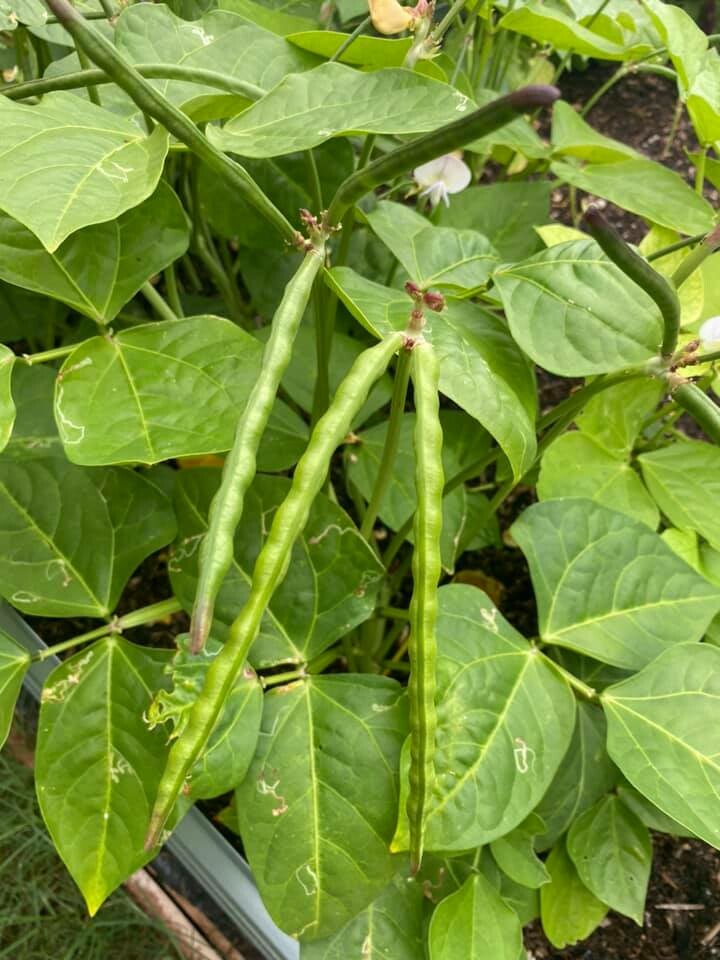
They get picked once the pods begin to turn yellow. You don't want to wait too long or they will be dried - but like I mentioned above, you can just go ahead and totally dry those and save them to plant next year. And my favorite are actually purple hull peas, which in fact, do have purple pods when it's time to pick them. I just couldn't find them last year.
One last thing - a friend told me about this helpful app called Seed to Spoon. It allows you to add plants to your "garden" and it gives you dates they should sprout and then anticipated harvest dates. You can add pictures, different kinds of events. And of course it has resources like pests you can look up, there's a weather feature and you can even look up plants by "health benefit". When you pull up a plant it gives you literally everything you need to know from planting dates to how to cook to saving the seeds!
I hope this has encouraged you to try growing a little something for yourself! Even if it's just 1 tomato plant in a container, it's really so rewarding to grow your own food!
Blessings from our house to yours!
Sarah Claburn, ND
Blessings from our house to yours!
Sarah Claburn, ND



